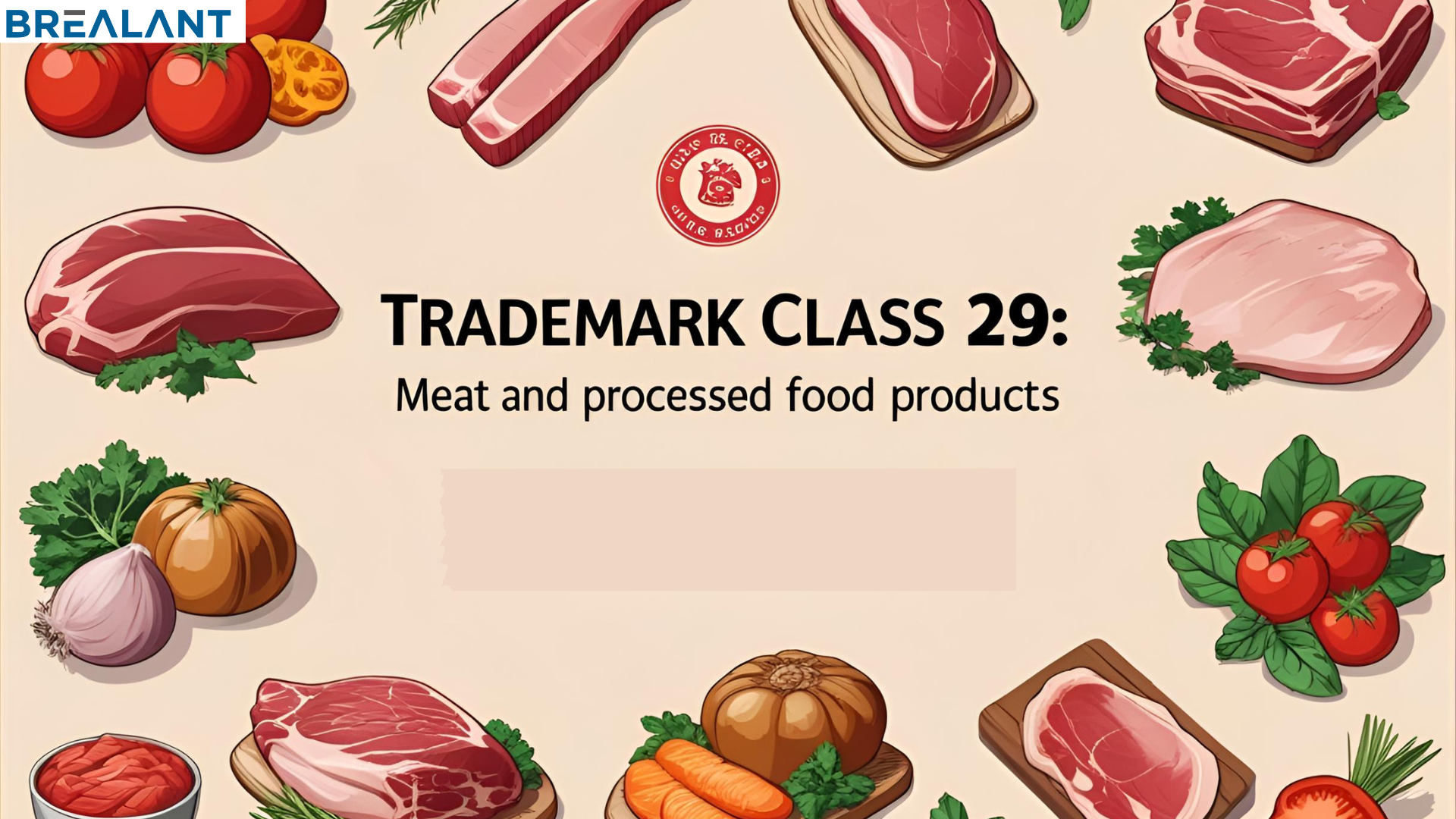A trademark is any sign, symbol, word, or phrase that has been registered with the Intellectual Property Office of the Philippines (IPOPHL) to uniquely identify the source of a product or service. Registering a mark ensures that your brand is protected from unauthorized use by competitors and strengthens your exclusive rights to your company’s identity.
Under the Philippine Intellectual Property Code (R.A. 8293), businesses can apply for trademark protection through IPOPHL. Applications must indicate the correct Nice Classification (international system of trademark classes) that corresponds to the goods or services.
Trademark Class 29: Food Products
Class 29 is primarily concerned with culinary and food-related items, particularly meat, seafood, dairy, preserved vegetables, oils, and related goods. Below is a breakdown:
1. Meat and Seafood Products
- Includes all meat and seafood, regardless of origin: beef, pork, poultry, game, fish, shellfish (lobster, crab, clams, sardines, etc.).
- Covers processed products such as sausages, canned meats, caviar, seaweed snacks, and preserved seafood.
2. Dairy Products
- Includes milk, cream, butter, margarine, cheese, and cheese spreads.
- Also covers derivatives such as yogurt, dairy-based desserts, and milk-based beverages.
3. Nuts, Olives, and Coconut Products
- All forms of nuts and nut butters (e.g., peanut butter, almond butter).
- Oils derived from nuts and seeds (sunflower oil, peanut oil).
- Products derived from olives and coconuts such as olive oil, coconut oil, coconut butter, and preserved olives.
4. Fruits and Vegetables (Processed)
- Class 29 does not cover fresh produce (that falls under Class 31). Instead, it protects:
- Dried, frozen, or canned fruits
- Fruit spreads (jams, jellies, marmalade)
- Fruit leather, snack packs
- Pickled or preserved vegetables (e.g., jarred jalapeños, pickles, kimchi)
- Cooked or juiced vegetables
Related Classes (Important Distinctions)
- Class 5 – Baby food (pharmaceutical goods).
- Class 31 – Fresh fruits, vegetables, and animal feed.
- Class 32 – Beverages like fruit juice, soda, and beer.
- Class 33 – Wines and spirits.
Correct classification is critical—filing under the wrong class may lead to rejection.
Examples and Case Insights
- Magnolia vs. Magnolia (G.R. No. 190066, 2016) – The Supreme Court ruled on a long-running dispute over the use of the “Magnolia” brand between San Miguel Corporation (for dairy and food products) and Nestlé (for butter, margarine, and milk). This illustrates how crucial correct classification and prior use are in food-related trademarks.
- Oishi Case (IPOPHL BLA Case No. 14-2009-00013) – Oishi successfully defended its snack brand against a confusingly similar mark. This reinforces the importance of distinctiveness in food product trademarks.
- ASEAN Trademark Guidelines also emphasize that descriptive terms (like “Fresh Milk” or “Nutty Butter”) are weak trademarks unless they have acquired distinctiveness through long-term use.
Filing Process in the Philippines
- Application with IPOPHL – Indicating the proper class (e.g., Class 29).
- Formality Examination – IPOPHL checks compliance with filing requirements.
- Substantive Examination – Examiner reviews distinctiveness and conflicts with prior marks.
- Publication for Opposition – Third parties may oppose within 30 days.
- Issuance of Certificate of Registration – If unopposed or opposition is dismissed.
✅ Tip: Food brands often face challenges with descriptiveness and similarity. For stronger protection, applicants should choose unique, arbitrary, or coined words rather than generic terms.

